Crafting traditional Japanese fans in Shinagawa offers a unique cultural experience. Participants can enjoy the artistry of Japan’s heritage, selecting decorative papers and using time-honored techniques to create their own personalized fans. The hands-on activity not only allows for self-expression but also results in a beautiful souvenir that captures the essence of Japanese culture. And the vibrant atmosphere of the Shinagawa neighborhood sets the perfect backdrop for this enriching experience.
Key Points
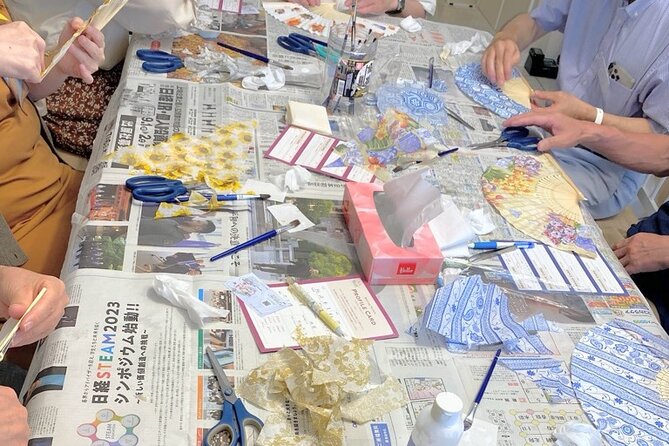
- Participants can create traditional Japanese fans called "uchiwa" and "sensu" by selecting decorative papers, folding spokes, and decorating with brushes and paints.
- The fan-making activity takes place in the Shinagawa neighborhood of Tokyo, which is a vibrant modern district with shopping, dining, and transportation hubs.
- The meeting point for the activity is near JR Oi Station, at a landmark called "PARK COFFEE," but the activity is not wheelchair accessible and not recommended for travelers with back problems.
- The activity is supplied by Shuminavi Inc. and includes all necessary tools and materials, as well as one complimentary beverage, priced at $106.31 per person for up to 8 travelers.
- The final result of the activity is a uniquely crafted fan that serves as a cultural souvenir, with the opportunity to learn about the significance and craftsmanship of traditional Japanese fans.
What Are Traditional Japanese Cultural Fans?
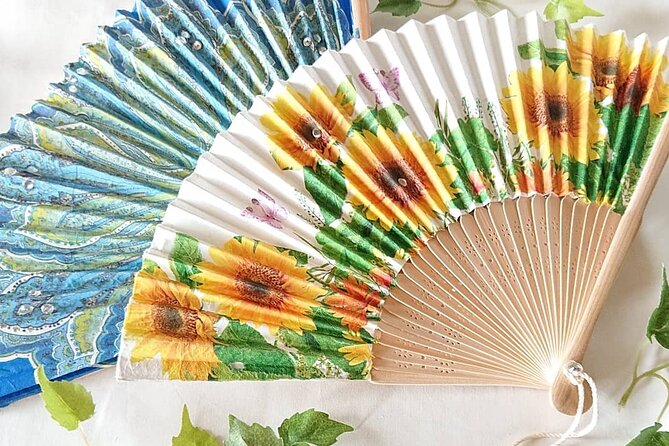
Traditional Japanese cultural fans, also known as "uchiwa" and "sensu," are essential accessories that have been part of Japanese culture for centuries.
These fans come in a variety of shapes, sizes, and designs, often featuring intricate artwork or calligraphy. They serve both practical and decorative purposes, providing a cooling breeze on hot summer days and adding an elegant touch to traditional attire and ceremonies.
The making of these fans is a time-honored craft, with skilled artisans using delicate materials such as paper, bamboo, and lacquer to create unique and beautiful pieces that are cherished for their cultural significance.
You can also read our reviews of more tours and experiences in Tokyo.
Exploring the Shinagawa Neighborhood
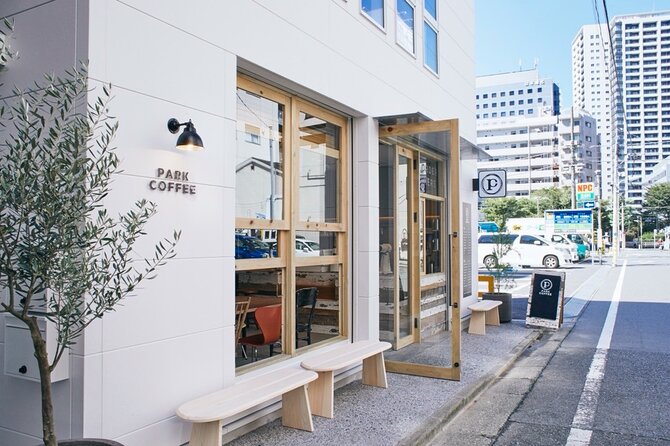
Although the meeting point for the traditional Japanese fan-making activity is located in the Shinagawa neighborhood of Tokyo, the area offers much more than just this cultural experience.
Shinagawa is a vibrant, modern district with a mix of shopping, dining, and transportation hubs. Visitors can explore the historic Shinagawa Shrine, browse the shops and restaurants along the Takanawa shopping street, or visit the Shinagawa Aquarium.
The neighborhood is well-connected, with the JR Shinagawa Station serving as a major transit hub. Whether you’re seeking culture or simply want to experience contemporary Tokyo, Shinagawa is a diverse and dynamic destination.
Meeting Point and Accessibility
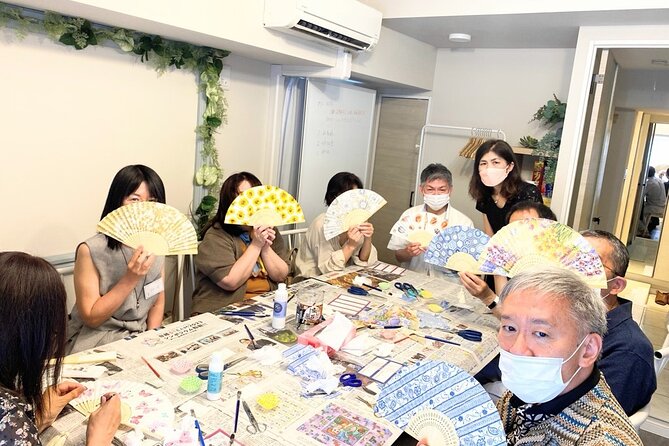
The meeting point for the traditional Japanese fan-making activity is conveniently located near JR Oi Station, right beside the Ito-Yokado supermarket.
The landmark is a white building called "PARK COFFEE", making it easy to find.
However, the activity isn’t wheelchair accessible, and infants must sit on laps.
Travelers with back problems are also not recommended to participate.
The activity ends back at the original meeting point, providing a hassle-free experience.
What’s Included in the Activity
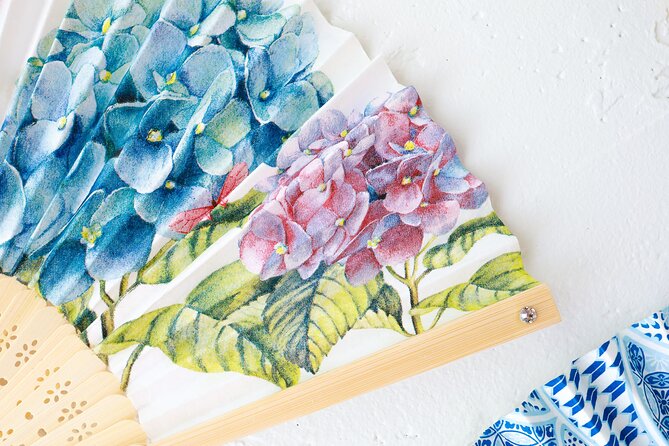
For the traditional Japanese fan-making activity, participants are provided with all the necessary tools and materials needed to create their own unique fans. This includes the fan base, decorative papers, and adhesives.
Plus, one complimentary beverage, limited to drinks under 600 yen, is included. The activity takes place in Shinagawa, Tokyo, and is supplied by Shuminavi Inc.
Priced from $106.31 per person, the class can accommodate up to 8 travelers. It’s a hands-on experience that allows participants to enjoy the rich cultural traditions of Japan.
The Fan-Making Process
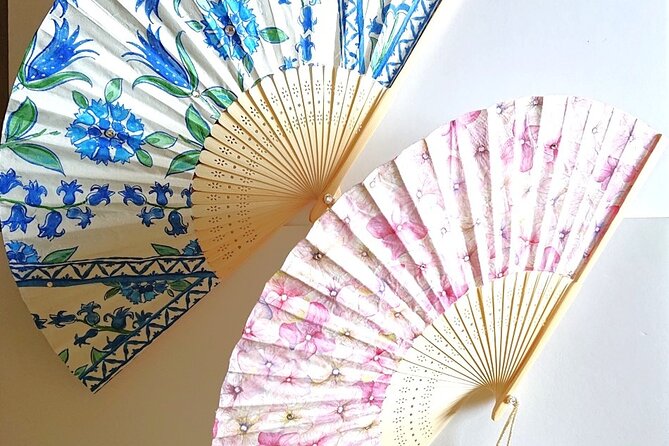
Participants start the fan-making process by selecting the decorative papers they wish to use. The instructor guides them through the intricate steps of assembling the fan. First, they carefully cut the paper to size, then fold and glue the spokes into place. Next, they adorn the fan with traditional Japanese designs, using brushes and paints.
| Step | Description |
|---|---|
| 1 | Select decorative papers |
| 2 | Cut paper to size |
| 3 | Fold and glue spokes |
| 4 | Decorate with traditional designs |
With the instructor’s expert assistance, participants create a beautifully crafted, functional fan to take home as a unique souvenir of their cultural experience.
Learning Japanese Fan-Making Techniques
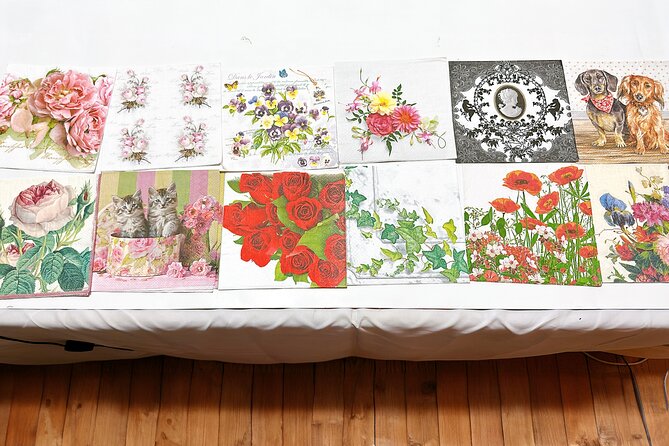
As participants begin the fan-making process, they’ll learn traditional Japanese techniques passed down for generations. The instructor will guide them through:
-
Selecting high-quality materials like delicate washi paper and intricate bamboo frames.
-
Meticulously folding and shaping the paper to achieve the iconic fan silhouette.
-
Applying decorative elements like delicate paintings or calligraphy to personalize their creations.
Through this hands-on experience, travelers gain a newfound appreciation for the artistry and precision required to make these timeless Japanese fans.
The activity offers a unique culture, allowing participants to connect with Japan’s rich heritage.
Experiencing Japanese Culture Firsthand
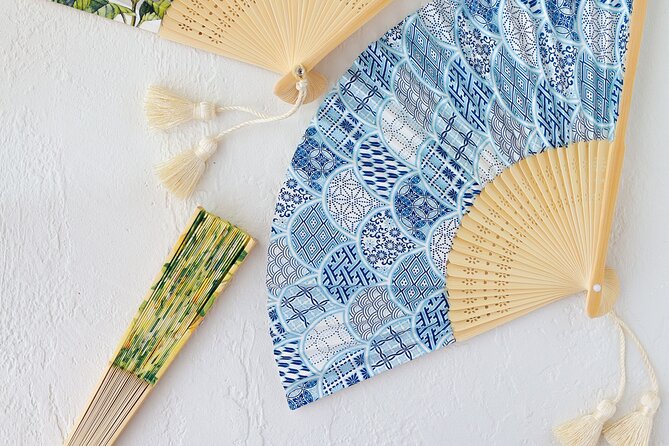
Making traditional Japanese fans offers travelers a chance to enjoy the country’s rich cultural heritage.
Through this hands-on activity, participants can gain a deeper understanding of the intricate techniques and cultural significance behind these iconic Japanese crafts.
Under the guidance of skilled instructors, visitors will learn how to meticulously construct their own traditional fan, infusing each piece with a touch of Japanese artistry.
This intimate cultural experience allows travelers to connect with Japan’s artistic traditions, fostering a greater appreciation for the country’s timeless cultural legacy.
It’s an opportunity to truly experience Japan firsthand.
Booking and Confirmation Details
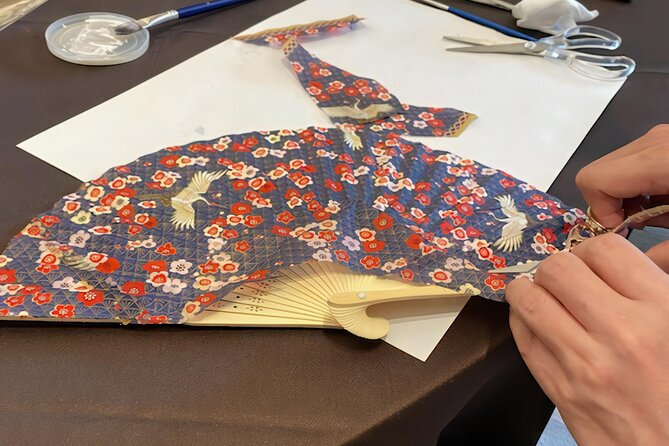
How does one book this traditional Japanese fan-making experience? To secure a spot, travelers can reserve their spot through the tour provider, Shuminavi Inc. The booking process is straightforward:
- Choose the desired date and time for the fan-making activity.
- Provide the number of participants in the group.
- Complete the payment, which is non-refundable.
Upon booking, travelers will receive a confirmation within 48 hours, subject to availability.
The activity takes place in Shinagawa, Tokyo, near the JR Oi Station. Participants will meet at the designated location, a white building called "PARK COFFEE," and the experience concludes back at the same spot.
Since You Asked
What Is the Average Group Size for This Activity?
The maximum group size for this activity is 8 travelers. Though the exact average group size is not provided, the information suggests a small, intimate group setting for making traditional Japanese cultural fans.
Can I Bring My Own Materials for the Fan-Making?
The activity supplies all necessary materials, so participants can’t bring their own. The price covers the cost of the tools and materials needed to create the traditional Japanese fans.
Is There a Dress Code or Specific Attire Required?
There’s no strict dress code, but comfortable clothing that allows you to move freely is recommended. Casual attire is fine, and you don’t need to dress up for this hands-on fan-making activity.
Can the Activity Be Customized for Private Events?
The activity can be customized for private events, according to the provider. Groups can arrange a private session with specific requirements, subject to availability and additional fees that may apply.
Are There Any Age Restrictions for Participants?
The activity doesn’t have any age restrictions. Children are welcome to participate, but infants must sit on laps during the activity.
The Sum Up
Crafting traditional Japanese fans in Shinagawa offers a captivating cultural experience. Participants enjoy the rich artistry, selecting decorative papers and mastering time-honored techniques. The hands-on activity results in a beautiful, personalized souvenir that embodies Japan’s intricate heritage. Exploring the vibrant Shinagawa neighborhood further enhances the immersive journey, making this an unforgettable opportunity to connect with the essence of Japanese culture.
More Tour Reviews in Tokyo
- Tokyo Traditional Food Tour in a Small Group
- Private 1 Day Tour to Nikko: Onsen, UNESCO Shrines and Nature
- Tokyo 6 Hr Private Guided Tour & Rickshaw Experience
- Private Breakfast Tour at Tsukiji Outer Market
- Japan Autumn & Winter Illuminations Discovery Tour (12 Days)
- Old and New Tokyo Full Day Private Tour
Not for you? Here's more nearby things to do in Tokyo we have reviewed
- Tokyo Traditional Food Tour in a Small Group
- Private 1 Day Tour to Nikko: Onsen, UNESCO Shrines and Nature
- Tokyo 6 Hr Private Guided Tour & Rickshaw Experience
- Private Beginner Japanese Cooking Class Near Tokyo
- Private Breakfast Tour at Tsukiji Outer Market
- Japan Autumn & Winter Illuminations Discovery Tour (12 Days)
- Old and New Tokyo Full Day Private Tour
- 【Private】Sushi & Ramen Cooking & Sake Set in Tokyo!(+Recipe)
- Private 1 Day Tour to Kamakura: Sea, Temples, and Coastal Scenery
- Tokyo Castle & Imperial Palace , Historical Walking Tour
- One Way Shuttle Van Transfer, Tokyo⇔Hakone Area
- Barrier Free Transportation in Hakone, No Guide (Tokyo Dep.)
